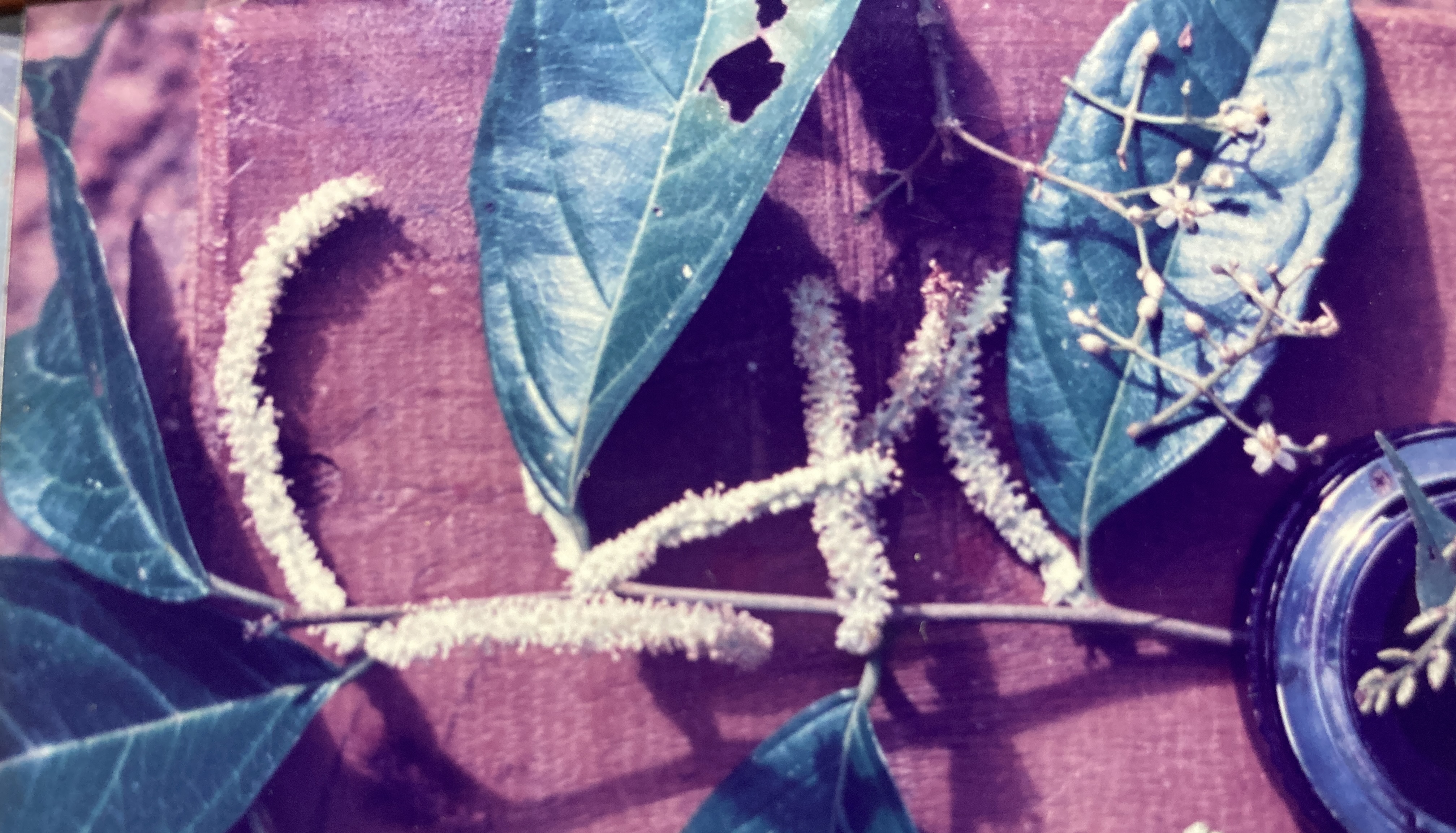Trophis racemosa (L.) Urban
Moraceae
OJOCHILLO NEGRO
Common evergreen understory or sub-canopy tree (15-20 m) found most frequently in disturbed or secondary forest habitats but present in the primary forest as well. Noteworthy for the large quantities of red berries that it generates annually, Ojochillo Negro is a very important source of forage for many rainforest mammals and birds.
Description: Ojochillo has a mostly cylindrical and straight trunk (45 cm) that sometimes sports short, stout, rounded buttresses at its base. Often little more than large roots breaking through the soil surface, these buttresses turn yellow or orange at their point of contact with the substrate. Most trees are clad in smooth, brown bark that is textured by long, horizontal lenticels at more or less periodic intervals. However, a few mature trees – occurring more frequently in drier sites – deviate from this pattern and exhibit a lighter and eye-catching tone of reddish-brown bark. Exfoliating and clinging loosely to the trunk, the bark of these trees tears off in thin, papery strips. Profuse branching along the upper half of the bole forms a narrow and moderately dense crown. Abundant, white, milky sap is exuded by broken twigs, leaves, and bark.

Leaves (15 by 6 cm) are simple, alternate, elliptically shaped, and sport pronounced drip-tips (1.5 cm). Though apparently lacking pubescence, their texture is very rough: feeling very much like coarse sandpaper when rubbed between the fingers. Prominent, white venation – in which the pinnately-arranged secondary veins are forward curving – marks both upper and lower leaf surfaces. Old foliage slowly senesces and falls during the first months of the year (during the dry season), but a completely new cover of fresh, light-green, limp leaves is regenerated in April.
Ojochillo Negro is a dioecious species, with distinct male and female flowers borne on unisexual trees. Male blossoms (4 mm) are densely packed along a white, axillar catkin measuring 7 cm in length. Numbering over a hundred to a catkin, each possesses four stamens enshrouded in an oddly shaped, translucent, web-like membrane. Small clusters of female flowers, including from six to eight blossoms each (5 mm), form short and stout racemes. Anatomically, these simpler blossoms consist of little more than large green ovaries topped by three-part, short pistils. Trophis racemosa‘s highly synchronized and precisely timed flowering season is organized into several short bursts of activity that occur between late June and early August.
Fruits (1 cm) grow slowly from the large ovaries of the female flowers. They finally mature, fading from green to pale pink and then to red, as rounded berries arranged in small clusters along short stalks (4 cm) that hang from leaf axils. Harvests occur annually and are of a consistently prolific nature. Beginning in mid-November, the fruiting season lasts until early January. A single, spherical, flesh-colored seed (4 mm) lies at the center of each fruit.
Similar Species: Far from unusual, Ojochillo leaves share the common, simple-alternate arrangement with many other tropical forest species. Sorocea cufodontisii, Mabea montana, and Pseudolmedia spuria leaves are also of similar – though smaller – shape. Perhaps the most clearly defining Ojochillo characteristic (aside from its unique flowers and fruits) is the unmistakable, rough, sandpapery texture of its leaves. Ojochillo carries this feature to an unrivaled extreme.
Natural History: Trophis racemosa is a species of vital importance to the ecology of the forests in which it is found: its ripe fruits are among the most sought-after forage in the Pacific Coastal rainforest. White-faced and squirrel monkeys, squirrels, raccoons, Clay-colored Robins, Saltators, Tanagers, and Kiskidees are among the fauna that avidly frequent this tree and make it a hothouse of activity during harvests. Trophis male flowers possess spring-loaded stamens that, upon being disturbed, thrust their anthers forward, propelling pollen reserves into the air. Wind then becomes the vehicle for pollen transport utilized by this species (Croat, 1978).
Uses: Allen (1956) reports that Trophis fruits are also fit for human consumption. He further relates that the yellow-brown wood is hard and heavy, though not used and that the cut branches have been given to cattle as fodder.
Distribution: In Manuel Antonio National Park (MANP), Trophis is most commonly found near forest edges, particularly along trail and road sides. It is occasionally found amid the denser growth of the primary forest, as an understory or subcanopy species. Trophis ranges from Mexico to Brazil, Peru, and the Greater Antilles.
Images: Trunk Leaf&Flower1 Leaf&Flower2 Flower Fruit




